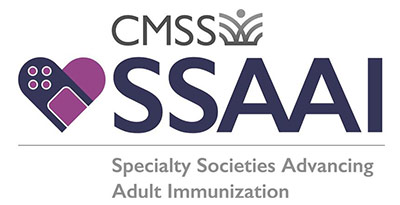Moving the Needle on Vaccinations: Lessons from AACE’s Health System Partners

AACE is part of a consortium of medical specialty societies, funded through CDC and supported by the Council on Medical Specialty Societies (CMSS), working to improve vaccination rates among vulnerable populations. Through this work, AACE has partnered with endocrine practices in seven health systems to support quality improvement initiatives aimed at increasing vaccination coverage among adults with diabetes. AACE’s health system partners in this project are:
- Brown Medicine and Lifespan Corporation
- Cleveland Clinic – Endocrine and Metabolism Institute
- Houston Methodist
- Lundquist Institute for Biomedical Innovation at Harbor-UCLA Medical Center
- Prisma Health Center Endocrinology Specialists and Thyroid Center
- University of California, Los Angeles Gonda (Goldschmied) Diabetes Center
- University of Nevada, Las Vegas Health
Throughout 2024, AACE will be sharing lessons learned, tips, tools, best practices, and resources from its health system partners so that you can consider how you might approach your own vaccination quality improvement efforts.
Key takeaways from AACE’s health system partners’ 2023 QI experiences are:
- Use the CDC’s Standards for Adult Immunization Practice (SAIP). Endocrine practices may not be the site where patients will receive their vaccinations BUT it’s critical that the endocrine care team play its role in vaccine coverage. How? The CDC’s SAIP outline the steps: Assess, Recommend, Refer, Administer, Document. When an endocrine practice examines their performance on meeting these CDC standards, you can identify opportunities for improving vaccine coverage.
- Start with your data. What do you know about vaccine coverage for your patients? How would you examine your practice’s performance in implementing the CDC’s SAIP? For example, what data do you have on the frequency of discussions about vaccine recommendations?
- Look at your workflow. If you want to understand how your practice implements the CDC’s SAIP, it’s important to analyze your practice’s workflow. Who is responsible for accessing vaccine status? When is this done?? Does the EHR support vaccine assessment? Does the EHR allow you to record refusals? How are providers prompted about a patient that isn’t current on AACE recommended vaccines? Questions on when, how, and who will help you not only identify areas for improvement but strategies for creating solutions.
- Improvement requires the team. It’s more likely that you will have success in making and sustaining improvements if you involve your team, get buy-in from those impacted by change, and keep everyone abreast of the status of QI efforts.
- Understand your patient population. It is important to understand the background, language, and culture of your patient population as you embark on any QI project.
What does a vaccination QI effort look like in practice? AACE will be publishing stories and experiences from all health systems partners throughout the year. Stay tuned!
For more information about improving vaccination coverage for adult patients with diabetes, including patient and provider tools, coding resources, and education, visit AACE’s immunization webpage.







